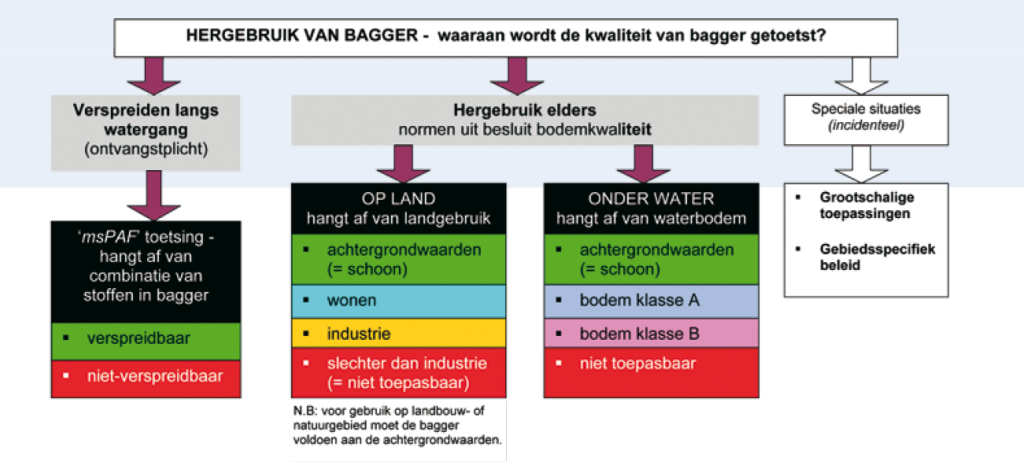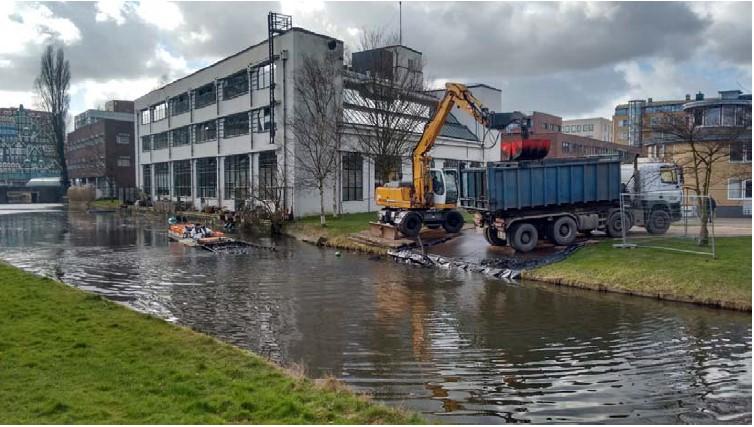Dredging and pollution
Clean or contaminated dredge
Before we dredge, we first check the quality of the dredge. We do this using a water bottom survey. This examination reveals whether we need to take samples. When we take samples, they are examined for contaminants. That way we know in advance whether the dredge is clean or not.
- Clean dredge: We are free to spread and dispose of this dredge.
- Spreadable dredge: This dredge is clean enough to be spread in the immediate vicinity of the watercourse. We may spread the dredge on the adjacent piece of land.
- Non-dispersible dredge: there are many contaminants in the dredge. We take the dredge to a special landfill.
To assess the quality of the dredge, the following steps are considered.

Dredged material that cannot be spread due to construction we bring to our transit depots. This situation often occurs in urban areas. We dry this dredge and use it in our flood defenses, among other things.
Dealing with contaminated dredge in the scouring process
Do you want or need to perform dredging work as part of the survey and suspect that the dredged material is contaminated? We have arrangements regarding the examination and processing of the dredged material. Please contact us about this.
This is how HHNK deals with PFAS and dredging
Since 2019, the Netherlands has had strict standards for PFAS for spreading and applying soil and dredge. It is understandable that landowners, because of all the news coverage, have concerns about receiving and handling dredge. We share these concerns. That's why we surveyed the presence of PFAS in water bottoms and dredge in 2021.
Very little PFAS contamination
To determine what effect the new rules will have on dredging, we examined the water bottoms of 20 ditches and canals in our service area. These locations are representative of the rural area. The careful analysis shows that the concentration of PFAS in the dredge remains well (at least factor of 10) below the standard that applies to spreading dredge on shore. We conduct research into the quality of the dredge prior to our dredging activities. This includes looking at the risk of occurrence of PFAS.
As a landowner, can you handle dredging?
Based on the Ministry of Infrastructure and Water Management's Temporary PFAS Action Framework, we can continue dredging in the outlying area and depositing the dredge on an adjacent property. Landowners can also continue to clean up and spread the dredged material without endangering human, animal or environmental health. At suspected sites, we always investigate first. We continue to monitor PFAS developments closely and adjust our dredging operations if necessary.
